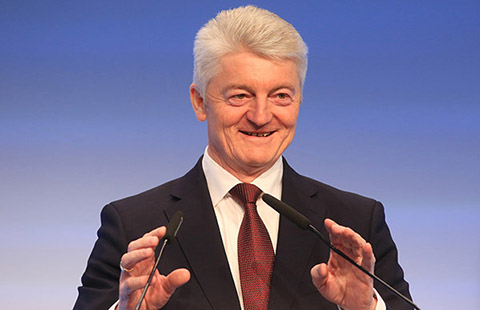China pushes for long-term steady growth of pension fund
BEIJING - With more than 200 million people over the age of 60, pension reform is a pressing matter for China.
In the first five months of the year, according to the Ministry of Human Resources and Social Security, 1.58 trillion yuan (about $231.5 billion) flowed into pension funds for workers, up 23.9 percent year on year.
Total expenditure in the period increased 23.2 percent to 1.35 trillion yuan, leaving a balance of around 226 billion yuan. The cumulative balance stood at 4.08 trillion yuan at the end of May.
Revenue surpassing expenditure will likely continue for the rest of the year, ensuring benefits are paid in full and on time, according to a ministry spokesperson.
While the overall picture stayed positive, geographical imbalance remained. In areas where economic growth is behind the national average, such as the old industrial base of northeast China, fewer people paid contributions while many had retired, resulting in a periodic deficit.
"We should start from where we are now and focus on the long-term, taking effective measures to ensure steady growth of the pension fund and promote the sustainable growth of the pension system," the spokesperson said.
China has been actively expanding pension fund coverage. By the end of 2016, employees participating in workers' pension funds totaled 379 million, 25.7 million more than a year ago.
Fiscal funds have been an important source of income for pensions. Since 1998, central fiscal funds have contributed 2.57 trillion yuan to pension funds for enterprise employees, including over 400 billion yuan of investments in 2016 alone, up 12.9 percent year on year.
Local governments have also been expanding their pension investments. In 2016, local governments at different levels together contributed 66.8 billion yuan, a year-on-year surge of 79.6 percent.
The country will continue to increase pension fund revenue by expanding coverage and raising fiscal investments, the ministry said. The central government will also play a bigger role in addressing the geographical imbalance, making proper adjustments to ease the burden in areas with pension fund shortage.
While money keeps flowing into the pension pool, the authorities are also striving to achieve better returns.
Pensions are traditionally held by banks or used to purchase treasury bills. They are now allowed to be invested in a variety of financial products, including bonds and stocks.
As of March this year, seven provincial-level regions have entrusted a total of 360 billion yuan of pensions to the National Council for Social Security Fund in the hope of more diverse and higher returns.
To contain the risks associated with higher yields, the government has set a 30-percent limit on the proportion of pension funds tied up in stocks, while various systems to guarantee fund security, including internal controls and risk provisions, are gradually established.
In the meantime, China is also developing a social security system to meet the demands of different groups. Besides the basic pension plan, individuals can also choose annuity programs or commercial pension insurance.
In a State Council executive meeting chaired by Premier Li Keqiang on Wednesday, China decided to speed up the development of commercial pension insurance, urging insurance companies to offer personalized and differentiated services to individuals and households.
"Commercial pension insurance, just like social security, is a lifeline for ordinary people," Li said.
"We must ensure that the funds are managed safely and reliably. This is the bottom line that every insurance institution should adhere to," he said.
- Sharing economy, private pension insurance support flexible employment
- China's pension funds see steady growth in Q1
- Commercial Pension Insurance: Its Role for the Improvement of Pension System(No.23, 2017)
- Pension funds to have low exposure to share markets
- Conservative approach taken on pension funds



















